In principle, re-fueling the transportation sectior of the US economy with some non-GHG producing feel has the most immediate and effective impact. This is easily seen by looking at the long term greenhouse gas inventory, in simplified sectors:
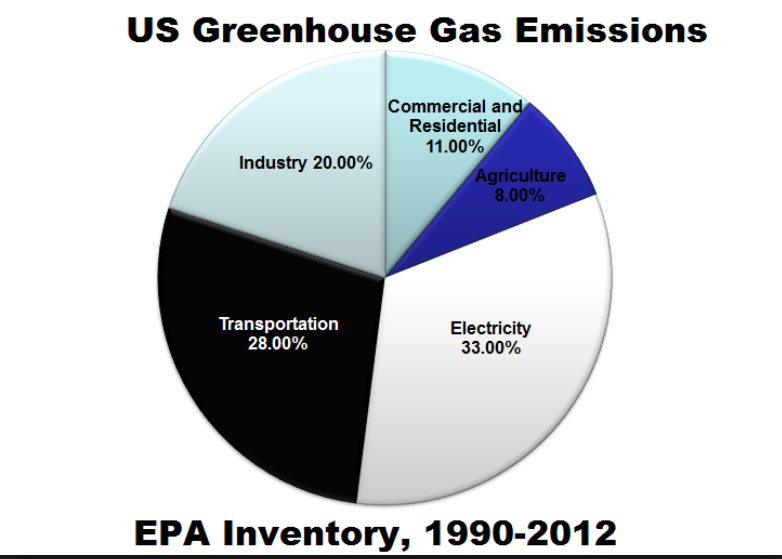
Below we show the 2015 version of the previous to see that little actual evolution has occurred. Yes fuel economy in vehicles is improving, but total US miles driven continues to increase and so these two offset each other so that the transportation contibution to total US GreenHouseGas emission
stays about the same.
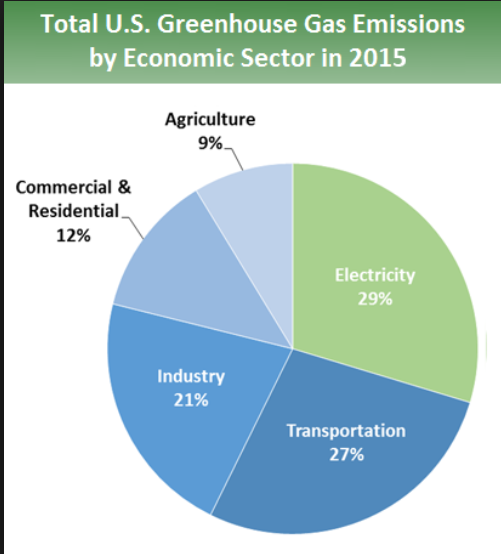
For vehicle miles traveled (VMT) in the US, there was a relatively flat period from about 2008-2014 but this has
recently risen with a new peak record set in August of 2017.
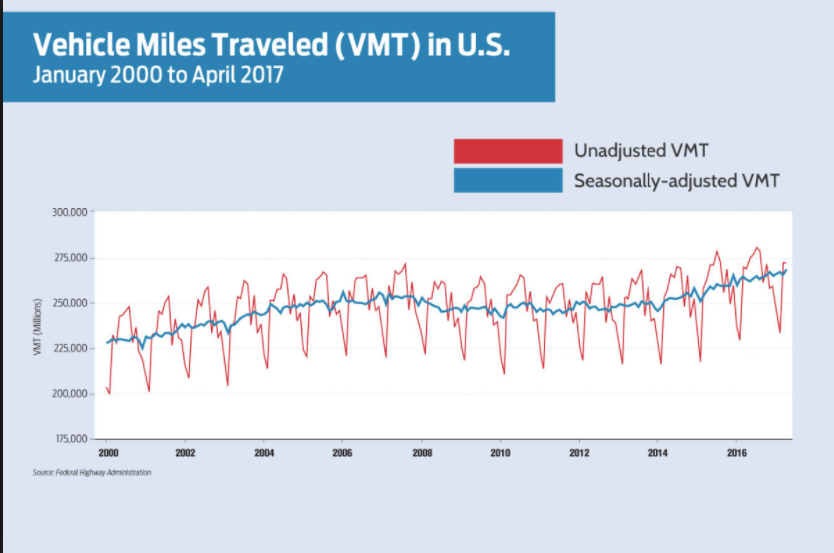
As discussed previously, gasoline is the only known "natural" substance that has sufficient energy density that can power a 4000 lb piece of metal, for 300 miles, at 70 mph, for several hours - nothing else really comes close:

The following alternative choices for gasoline all have various limitations that we
now discuss:
- Batteries for Electric Vehicles
 growth will occur but will be limited by the materials need that can be haversted on an annual basis for the battery packs. This is particularly true for lithium stocks and Tesla's plans , despite the perrenial cheerleading of Elon Musk. growth will occur but will be limited by the materials need that can be haversted on an annual basis for the battery packs. This is particularly true for lithium stocks and Tesla's plans , despite the perrenial cheerleading of Elon Musk.
While the graph below looks favorable, numbers always need context.
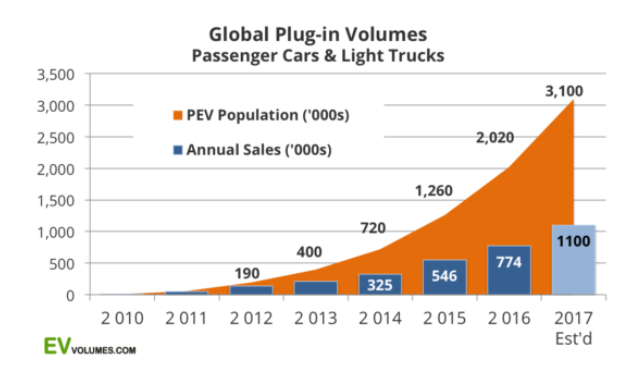
As of end of 2016 there were 3100 (thousand) = 3.1 million vehicles but the current global vehicle fleet is about 1.5 billion so that is a penetration of 0.2% ! A good report on the real world difference between EV availability and the expectations of the consumer can be found here
- Next might come Hydrogen Fuel Cells but until we have discovered how make Hydrogen from renewable electricity souces (see material later on about The Hydrogen Economy) and how to use material that is more abundant than platinum as a catalyst, fuel cell vehicles will be even less than EVs. Again, note the numerical value of the Y-axis in the context of the 1.5 billion gasoline powered vehicles currently in the world.
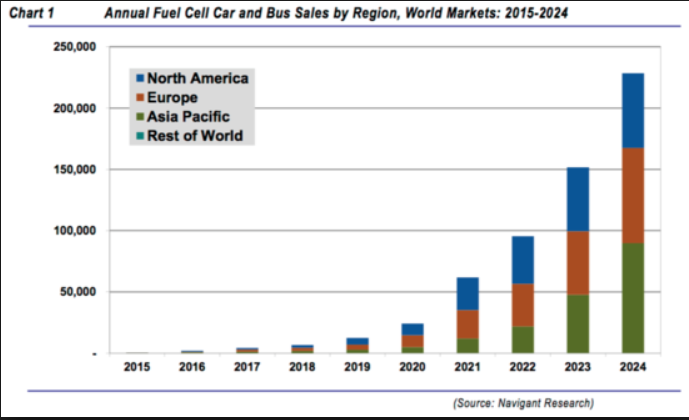
- Next might come from Natural Gas (NG) since it so clean:
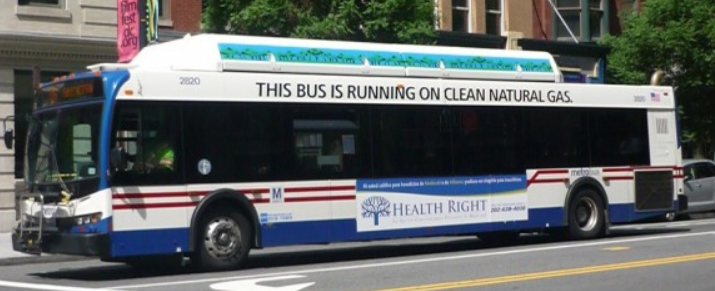
NG is primarily used in buses and trucks and mostly in parts of the world other than North America:
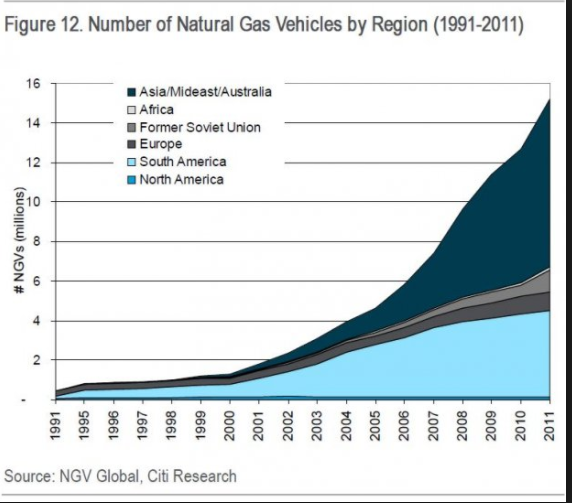
While this growth has continued so there are now about 15 million vehicles world wide -- there are only 150,000 in the US.
In the US we have a NG fetish love affair with NG fired electricty because it is "cleaner than coal"
- For the US, this then leaves us with only one viable alternative, substituting some kind of biofuel for gasoline.
Ethanol has long been a viable substitute for gasoline fuel. However, the energy content of Ethanol is 10-20% lower than gasoline and consequently fuel economy will be lowered by 10-20% when using a strictly ethanol bases fuel. Indeed, in many states (including Oregon) most of the "gasoline" you buy at the pump has some amount of ethanol already mixed in.
A definitive guide to all things BioFuel
Ethanol comes from two kinds of feedstocks a) Grain and b) the whole plant (cellulosic)
Grain-Based Ethanol:
Ethanol is an alcohol-based alternative fuel
produced by fermenting and distilling starch crops
that have been converted into simple sugars.
Feedstocks for this fuel include corn, barley, and
wheat.
Today's commercially available vehicles that can use
E85 (85% Ethanol and 15% gasoline) are called
flexible fuel vehicles (or FFVs), meaning that they
can run on E85, gasoline, or any mixture of the two.
The market for FFVs is continuing to grow and we will see that Brazil is an interesting special case - note that the UK has a huge growth rate but the actual volume of fuel is quite low. Once again, numbers in context. Its really only Brazil and China that are producing large amounts of ethanol for internal use and having the residual to export to other countries.

Currently there are about 20 million FFVs in America (20 million out of about 400 million light duty vehicles = 5%) which are supported by a growing number of fuel stations.
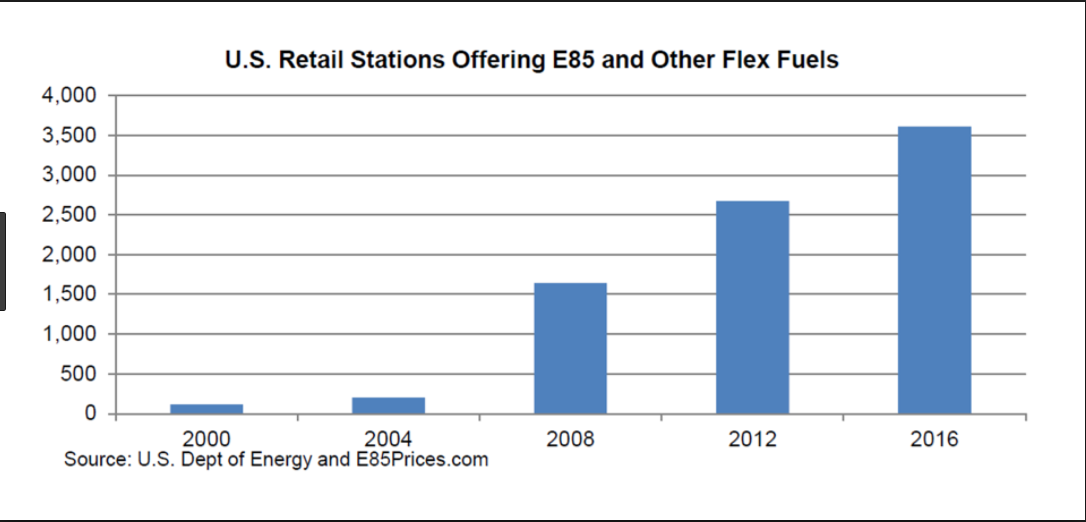
Sequential BioFuels is located in
Eugene and is a local distributor of biodiesel and grain ethanol fuels. Their production process is shown here:
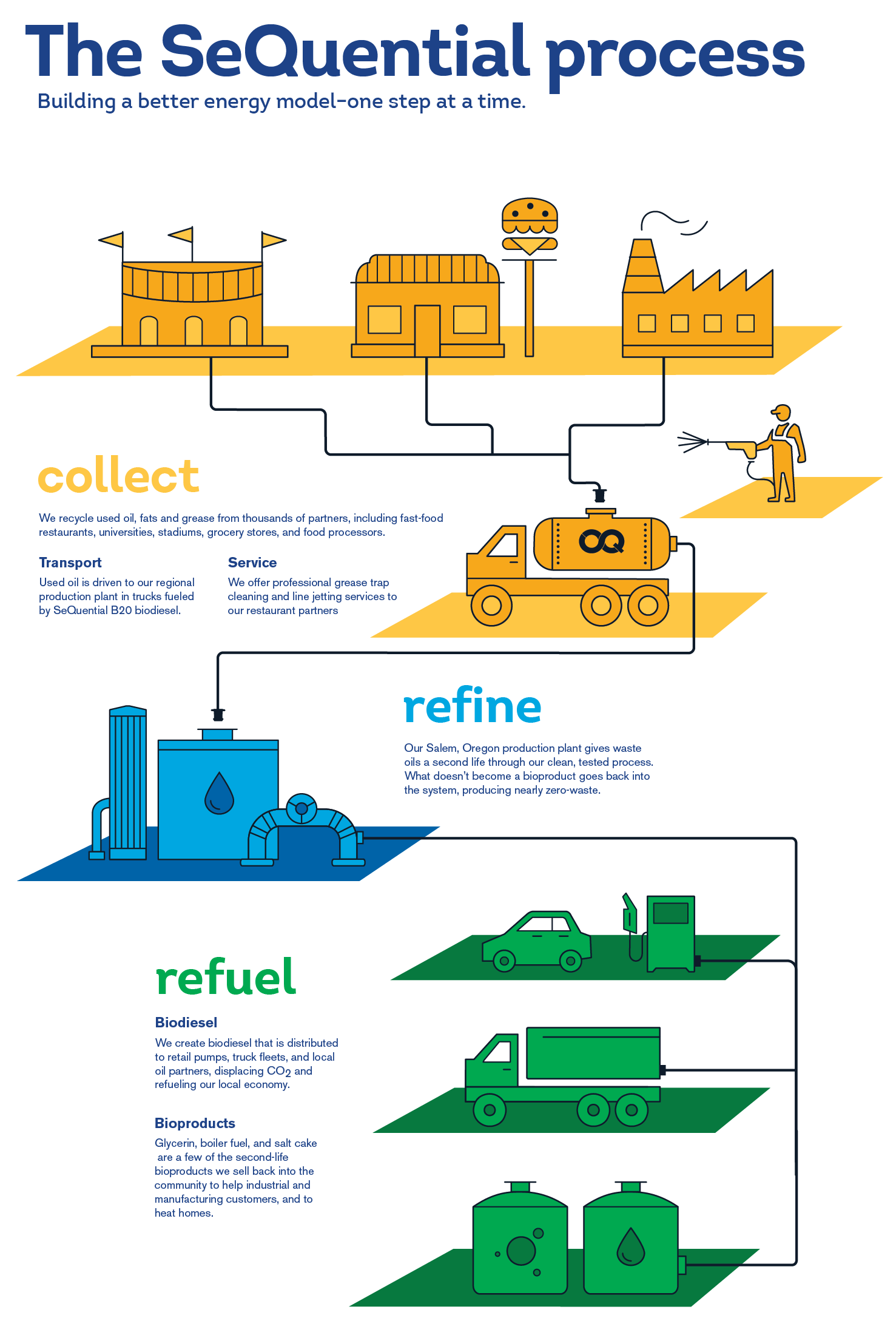
Note that Suquential BioFuels started in 2001. It is now 17 years later but they only have dedicated 3 stations (one is diesel only facility in Salem). This slow growth is a consequence of the relatively low available yield of raw material to convert into
biofuels.
However, Sequential does now sell small amounts of BioDiesel (B20) - primarly for use in 18 wheel trucks, to a vareity of
gas stations in the NorthWest. However, they are unable to scale of their ethanoal distirbution to support FFVs.
A promising source of ethanol based transportation does come from sugar cane. Brazil is a major producer of sugar gain and now has an aggressive initiative to change out most of their transportation fleet from gasoline/diesel based to sugar cane based. The market response in terms of sales of FFVs in Brazil
has been phenomenal, as shown below, and Brazil is well on their way to achieving this goal.
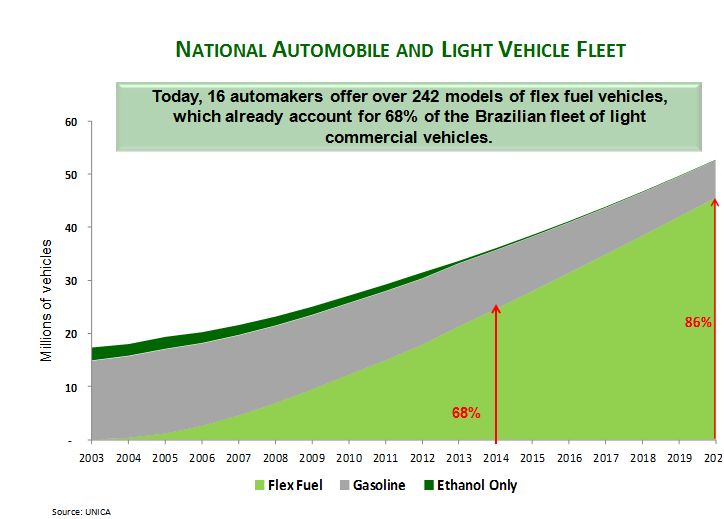
Cellulostic BioFuels: this may have large potential:
- Conventional ethanol is derived from grains such as corn and wheat or soybeans.
This has somewhat limited yield per unit acre of crops grown.
As a result, grain based ethanol, as derived from US Corn growth, is simply not scalable (as will be
shown shortly) and will be relegated to local markets mostly located in the Midwest.
- Cellulosic ethanol can be produced from a wider variety of cellulosic biomass feedstocks including agricultural plant wastes (corn stover, cereal straws, sugarcane bagasse), plant wastes from industrial processes (sawdust, paper pulp) and energy crops grown specifically for fuel production, such as SWITCHGRASS
|
 growth will occur but will be limited by the materials need that can be haversted on an annual basis for the battery packs. This is particularly true for lithium stocks and Tesla's plans , despite the perrenial cheerleading of Elon Musk.
growth will occur but will be limited by the materials need that can be haversted on an annual basis for the battery packs. This is particularly true for lithium stocks and Tesla's plans , despite the perrenial cheerleading of Elon Musk.

